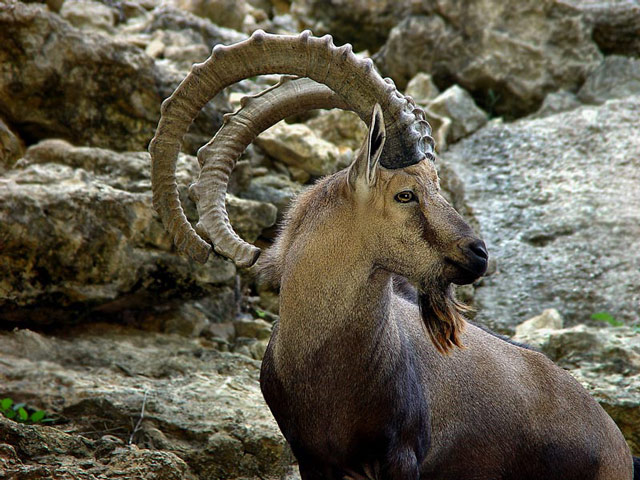
Photo courtesy of Derek Hilton (MxCat Graphix)

Photo courtesy of Derek Hilton (MxCat Graphix)
| Name: Nubian ibex |
| Scientific name: Capra ibex nubiana |
| Range: Northern Africa |
| Habitat: Alpine regions of the desert |
| Status: Limited and endangered in Israel |
| Diet in the wild: Herbivorous |
| Diet in the zoo: herbivore diet |
| Location in the zoo: Upper Walkway Overlooking the African Hoof Stock Exhibit |
General information:
Females and young live in herds of up to 20 individuals, while males spend much of the year in bachelor groups. Males frequently fight amongst themselves for hierarchy. |
Special anatomical, physiological
or behavioral adaptations:
Both the male and female have very strong hind legs often used for defense. If they feel as if they are in danger, then they will rise up on their hind legs and point their horns towards their predator. |
Personal Observations:
|
Source Materials and Related
Link
|
|
Amanda Ortega If you have any questions or comments then you can send them to gekko_18@hotmail.com or to
|